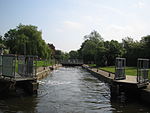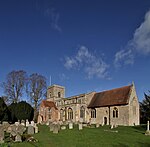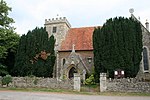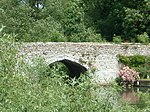Mill House and The Wharf, Sutton Courtenay

The Wharf, Walton House and Mill House are three houses in Church Street, Sutton Courtenay, Oxfordshire, England. They are part of a complex of buildings bought and expanded by Margot Asquith, wife of the then Prime Minister H. H. Asquith, from 1911 and which formed their country home until his death in 1928. Renovations and expansions were undertaken by the architect Walter Cave and were funded by a number of Margot Asquith's friends and admirers. Margot sold the complex in 1932, and the houses have subsequently been in separate ownership. In 2006, Helena Bonham Carter, Asquith's great-granddaughter bought back Mill House. All three properties are Grade II listed buildings.
Excerpt from the Wikipedia article Mill House and The Wharf, Sutton Courtenay (License: CC BY-SA 3.0, Authors, Images).Mill House and The Wharf, Sutton Courtenay
Church Street, Vale of White Horse
Geographical coordinates (GPS) Address Nearby Places Show on map
Geographical coordinates (GPS)
| Latitude | Longitude |
|---|---|
| N 51.646 ° | E -1.2712 ° |
Address
Church Street
Church Street
OX14 4NJ Vale of White Horse
England, United Kingdom
Open on Google Maps









